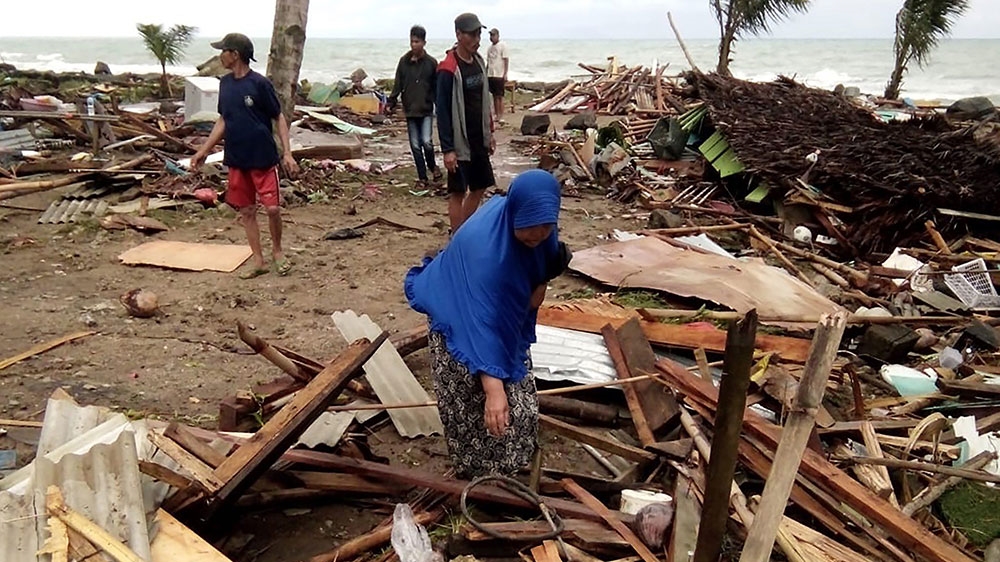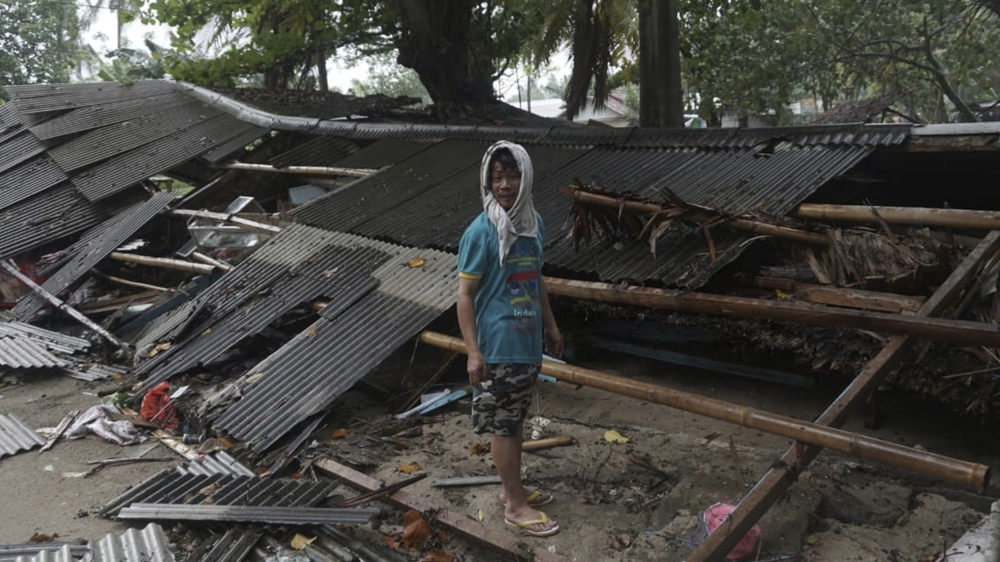Indonesia tsunami kills hundreds, more than 800 injured
The death toll from a volcano-triggered tsunami in Indonesia has risen to 222, with more than 800 people injured, officials said Sunday.
“222 people are dead, 843 people are injured and 28 people are missing,” Indonesia’s national disaster agency spokesperson Sutopo Purwo Nugroho said.
“This number is predicted to increase because not all victims have been successfully evacuated, not all health centres have reported victims and not all locations have got complete data.”
The tsunami hit both sides of Indonesia‘s Sunda Strait on Saturday, sending a wall of water crashing about 20 metres inland and sweeping away hundreds of homes and hotels, officials and witnesses have said.
Scientists from Indonesia’s Meteorology, Climatology, and Geophysical Agency, also known as BMKG, said it could have been caused by undersea landslides from the eruption of Anak Krakatau, a volcanic island formed over years from the nearby Krakatau volcano. They also cited tidal waves caused by the full moon.
The worst affected area was the Pandeglang region of Banten province in Java, which encompasses the Ujung Kulon National Park and popular beaches, the disaster agency said. Of the deaths, at least 33 were in Pandeglang.
In the city of Bandar Lampung on southern Sumatra, hundreds of residents took refuge at the governor’s office.
Alif, a resident in Pandeglang district, said the tsunami reached about three metres high. He told MetroTV station that many people were still searching for missing relatives.
 |
| Cars were rolled over after the tsunami hit Sunda Strait, in Anyer, Banten [EPA-EFE/BNPB] |
TV footage showed roads blocked by debris from damaged houses, overturned cars and fallen trees. The water washed away an outdoor stage where a local rock band was performing, killing at least one musician. Others were missing.
Authorities warned residents and tourists in coastal areas around the Sunda Strait to stay away from beaches and a high-tide warning remained in place through till December 25.
“Please do not be around the beaches around the Sunda Strait. Those who have evacuated, please do not return yet,” said Rahmat Triyono of BMKG.
 |
| A local woman walks near her damaged house hit by a tsunami at Tanjung Lesung district in Pandeglang, Banten province, Indonesia [Muhammad Bagus Khoirunas/Antara Foto/Reuters] |
Norwegian Oystein Lund Andersen was taking pictures of the volcano when he suddenly saw a big wave come crashing towards him, sending him running.
“[The next] wave entered the hotel area where I was staying and downed cars on the road behind it. Managed to evacuate with my family to higher ground through forest paths and villages, where we are taken care of [by] the locals. Were unharmed, thankfully,” he said.
An Indonesia pop band was performing in western Java when the waves from the tsunami suddenly swept away the stage, musicians and fans. The water flowed up to 20 metres inland, killing dozens, injuring hundreds and damaging buildings.
Volcanic activity
Robin George Andrews, science journalist and volcanologist said the tsunami was caused most likely by volcanic activity.
“There’s a suspicion that an underwater landslide triggered by a spike in volcanic activity pushed a significant amount of water around the strait which caused the tsunami,” Andrews said.
“Someone I spoke to was at one of the beaches at the time and they didn’t feel any shaking, so it’s quite clear that this wasn’t triggered by an earthquake like the one in Sulawesi in September.
“Indonesia does sit on the ‘Ring of Fire’. There’s always volcanic eruptions happening there … This is something that will naturally always happen there … it’s one of the most geologically active sites in the world.”
 |
| Residents inspect a house damaged by a tsunami, in Carita, Indonesia [The Associated Press] |
The disaster mitigation agency said it was still compiling information on the tsunami and there was a “possibility that data on the victims and damage will increase”.
The Anak Krakatau volcano in the Sunda Strait that links the Indian Ocean and the Java Sea erupted about 24 minutes before the tsunami, the BMKG said.
The 305-metre-high volcano, about 200km southwest of capital Jakarta, has been erupting since June. In July, authorities widened its no-go areas to 2km from the crater.
In September, more than 2,500 people in Indonesia were killed by an earthquake and tsunami that hit the city of Palu on the island of Sulawesi, which is just east of Borneo.
No warning
Jan Gelfand of the International Federation of Red Cross and Red Crescent Societies told Al Jazeera that the there was little warning of an upcoming tsunami.
“There was not a great deal of tectonic activity or earthquake activity … this would have happened very quickly with very little warning because there wasn’t anything to give them warning,” Gelfland said adding that support teams are helping people in affected areas.
“We have people that are trained in psychosocial support because this is a traumatic event especially given all the things that Indonesia suffered in the last four months,” Gelfland said.
The number of casualties is expected to increase as rescue workers reach affected areas.
Physical losses included 430 heavily damaged homes, nine hotels and 10 heavily damaged vessels. Footage posted by the head of the disaster agency showed the aftermath of flooded streets and an overturned car.
 |
 |
| Debris from damaged buildings littered the streets on Carita beach [Ronald/AFP] |
 |
| Residents inspected the damage to their homes on Carita beach after the tsunami [Semi/AFP] |
 |
| The tsunami killed a number of people around Indonesia’s Sunda Strait, sending a wall of water crashing 20 metres inland and sweeping away hundreds of homes [Dian Triyuli Handoko/AP] |
 |
| A man inspects his house which was damaged by a tsunami in Carita [Dian Triyuli Handoko/AP] |
 |
| Residents sit inside a mosque as they evacuated following high waves and the eruption of Anak Krakatau volcano at Labuan district in Pandeglang regency [Muhammad Bagus Khoirunas/Reuters] |




